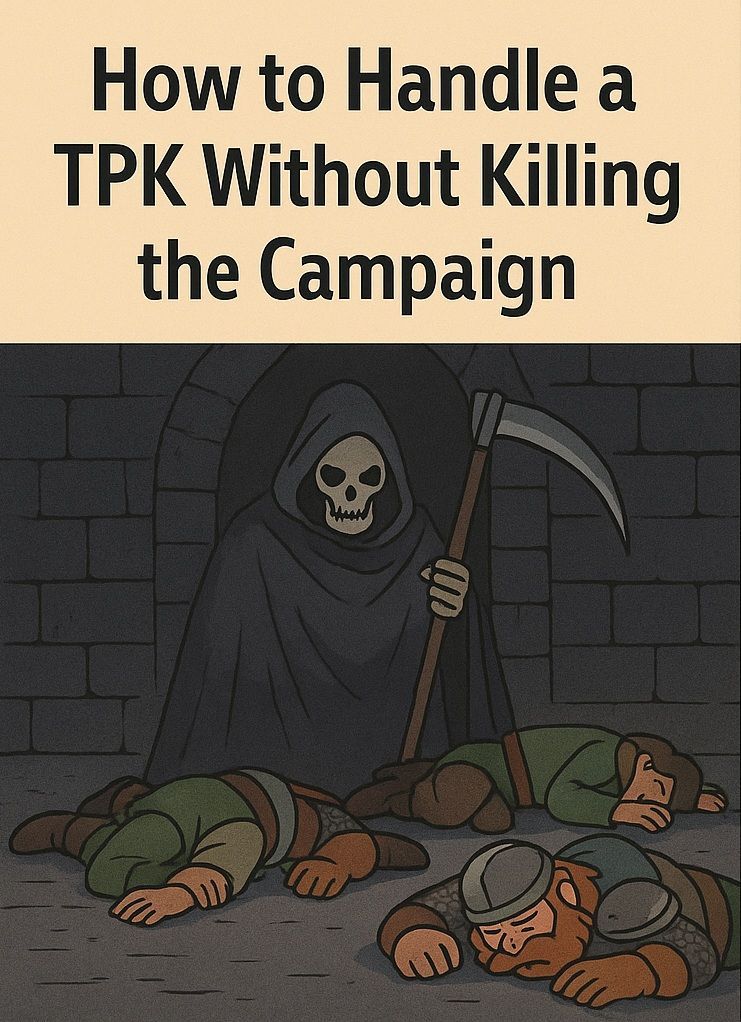Adapting Modules: Personalizing Pre-Written Adventures for Your Group

Dear Readers, welcome back to our Dungeons & Dragons (D&D) blog! Today, we’re exploring the art of adapting pre-written adventure modules to fit the unique preferences and needs of your gaming group. While published adventures offer meticulously crafted narratives and meticulously balanced encounters, they can sometimes feel impersonal or disconnected from your players’ characters and the ongoing storylines in your campaign. Personalizing these modules can enhance player engagement, create a more immersive experience, and ensure that the adventure feels tailor-made for your group. In this post, we’ll discuss the benefits of adapting modules, provide tips for customization, and offer practical examples to inspire your own adaptations. So, let’s dive in and discover how to transform pre-written adventures into personalized epic tales for your D&D group.
The Benefits of Adapting Modules
Adapting pre-written modules offers several advantages that can significantly enhance your campaign:
1. Increased Player Engagement
Personalizing an adventure to incorporate your players’ characters and their backstories can greatly increase their investment in the story. When players see their characters’ personal goals, histories, and relationships reflected in the adventure, they become more engaged and motivated.
Example: A player’s character has a long-lost sibling. You can adapt a module by introducing the sibling as a key NPC, making the adventure more personally relevant to that player.
2. Enhanced Story Cohesion
Adapting modules allows you to seamlessly integrate them into your ongoing campaign, ensuring that the narrative flows smoothly and logically. This helps maintain continuity and prevents the adventure from feeling like a disconnected side quest.
Example: If your campaign is centered around a growing threat from an ancient cult, you can modify a module to feature the cult as the primary antagonists, tying it into the broader storyline.
3. Flexibility and Creativity
Customizing modules gives you the flexibility to adjust the difficulty, pacing, and tone of the adventure to match your group’s preferences. It also allows you to infuse your own creative ideas, making the adventure uniquely yours.
Example: If your group enjoys role-playing and social interactions, you can expand on NPC dialogues and add additional role-playing opportunities. Conversely, if they prefer combat, you can increase the number and difficulty of encounters.
4. Addressing Group Dynamics
Every group has its own dynamics, including the mix of character classes, player personalities, and preferred playstyles. Adapting a module ensures that it caters to the strengths and preferences of your group, making the experience more enjoyable for everyone.
Example: If your group has a strong focus on stealth and subterfuge, you can add more opportunities for sneaking, spying, and infiltration to the module’s encounters.
Tips for Adapting Pre-Written Modules
Personalizing a pre-written module involves several steps and considerations. Here are some tips to help you effectively adapt adventures for your group:
1. Know Your Players and Their Characters
Understanding your players’ characters, their backstories, goals, and motivations is crucial for personalization. Take the time to discuss with your players and gather details that can be woven into the adventure.
Example: If a player’s character is seeking vengeance against a particular villain, consider making that villain a central antagonist in the adapted module.
2. Identify Key Elements to Adapt
Identify the key elements of the module that can be customized, such as NPCs, locations, plot hooks, and encounters. Focus on areas where personalization will have the most significant impact.
Example: Change the names and backgrounds of key NPCs to match the cultures and regions familiar to your players’ characters. This makes the NPCs feel more connected to the existing world.
3. Integrate Character Backstories
Look for opportunities to integrate your players’ character backstories into the adventure. This can involve creating personal connections with NPCs, referencing past events, or incorporating character-specific plot hooks.
Example: If a character has a history of rivalry with a mercenary group, you can introduce that group as antagonists in the module, creating a personal stake in the conflict.
4. Adjust Difficulty and Encounters
Tailor the difficulty of encounters to match your group’s level and capabilities. Consider adjusting the number of enemies, modifying their stats, or introducing unique challenges that cater to your players’ strengths and weaknesses.
Example: If your group excels in combat, you can add more challenging enemies or tactical elements to the encounters. If they struggle with certain types of foes, you can provide additional resources or alternatives for overcoming obstacles.
5. Enhance Role-Playing Opportunities
Expand on the role-playing opportunities in the module by adding more detailed NPC dialogues, social encounters, and moral dilemmas. Encourage your players to interact with the world and its inhabitants in meaningful ways.
Example: Create complex NPCs with their own motivations and secrets, encouraging players to engage in conversations and uncover hidden information through role-playing.
6. Incorporate Worldbuilding Elements
Integrate elements of your campaign world into the module to create a seamless experience. This can include references to ongoing storylines, familiar locations, and established lore.
Example: If your campaign world features a specific pantheon of gods, ensure that the religious aspects of the module reflect those deities, adding consistency to the setting.
7. Be Flexible and Adaptable
While it’s important to plan your adaptations, remain flexible and open to improvisation. Your players’ actions and decisions may lead the story in unexpected directions, so be prepared to adjust on the fly.
Example: If your players decide to negotiate with a potential enemy instead of fighting, be ready to adapt the story to accommodate their choices and create new opportunities for role-playing and diplomacy.
Practical Examples of Adapting Modules
To illustrate how you can personalize pre-written modules, here are practical examples of adapting popular D&D adventures:
Example 1: “Lost Mine of Phandelver”
Original Module Overview: “Lost Mine of Phandelver” is a classic introductory adventure set in the region of Phandalin. The players are hired to escort supplies to Phandalin, uncovering a plot involving the Cragmaw goblins, the Redbrand ruffians, and the mysterious Black Spider.
Adaptation Ideas:
a. Character Backstories:
- Integrate a player’s backstory by making the town of Phandalin their character’s hometown. This gives the player a personal stake in the adventure and a reason to protect the town.
- If a character has a background involving criminal activity, they may have past dealings with the Redbrand ruffians, creating a personal conflict.
b. NPC Personalization:
- Modify NPCs to create personal connections with the players. For example, make Sildar Hallwinter a former mentor to one of the characters, adding emotional weight to his rescue.
- Change the background of Sister Garaele to be a former companion of a player’s character, providing a reason for the character to assist her in her quest to find the banshee Agatha.
c. Worldbuilding Integration:
- Incorporate elements of your campaign world by modifying the setting and lore. If your campaign features a specific pantheon of gods, adjust the religious aspects of the module to reflect those deities.
- Add references to ongoing storylines, such as hints about a larger threat that ties into the main campaign.
d. Encounter Adjustments:
- Adjust the difficulty of encounters based on your group’s level and capabilities. Add or remove enemies, modify their stats, and introduce environmental challenges.
- Include unique challenges that cater to your players’ strengths, such as stealth-based encounters for a rogue-heavy party or puzzles for a group that enjoys problem-solving.
e. Role-Playing Opportunities:
- Expand on NPC dialogues and interactions, providing opportunities for players to gather information, form alliances, and uncover secrets.
- Introduce moral dilemmas and choices that force players to consider the ethical implications of their actions, such as deciding the fate of captured enemies.
Example 2: “Curse of Strahd”
Original Module Overview: “Curse of Strahd” is a gothic horror adventure set in the land of Barovia, ruled by the vampire lord Strahd von Zarovich. The players must navigate the dark and treacherous landscape, ultimately confronting Strahd in his castle.
Adaptation Ideas:
a. Character Backstories:
- Integrate character backstories by connecting them to the land of Barovia. For example, a character may have a family member who was taken by Strahd, providing a personal motivation to defeat him.
- If a character has a background as a monster hunter, they may have a history of pursuing Strahd or other creatures of the night.
b. NPC Personalization:
- Personalize key NPCs by creating relationships with the players’ characters. For example, make Ireena Kolyana a childhood friend of one of the characters, adding emotional stakes to her protection.
- Modify the backstory of Van Richten to include a connection with a player’s mentor or organization, providing additional reasons for the players to seek his guidance.
c. Worldbuilding Integration:
- Incorporate elements of your campaign world into Barovia, such as familiar deities, organizations, and cultural references. This helps create a seamless transition between the main campaign and the adventure.
- Add lore and history that ties Barovia to the larger world, providing context and depth to the setting.
d. Encounter Adjustments:
- Adjust the difficulty of encounters to match your group’s level and capabilities. Add or remove enemies, modify their abilities, and introduce environmental hazards.
- Create unique challenges that align with your players’ strengths, such as intricate traps for a party with a skilled rogue or undead hordes for a group of clerics and paladins.
e. Role-Playing Opportunities:
- Expand on the role-playing opportunities by developing the personalities and motivations of key NPCs. Provide detailed dialogues and interactions that encourage players to engage with the world.
- Introduce moral dilemmas and choices that force players to grapple with difficult decisions, such as whether to ally with morally ambiguous characters to achieve their goals.
Example 3: “Tomb of Annihilation”
Original Module Overview: “Tomb of Annihilation” is an adventure set in the jungle-choked land of Chult, where a deadly curse is causing the slow death of those who have been resurrected. The players must explore the dangerous wilderness and delve into the tomb of the lich Acererak to lift the curse.
Adaptation Ideas:
a. Character Backstories:
- Integrate character backstories by creating personal connections to Chult. For example, a character might be searching for a lost expedition that included a family member or mentor.
- If a character has a background as an explorer or archaeologist, they may have prior knowledge of Chult’s history and legends, providing valuable insights.
b. NPC Personalization:
- Personalize key NPCs by linking them to the players’ characters. For example, make Artus Cimber an old friend or rival of one of the characters, adding depth to their interactions.
- Modify the backstory of Syndra Silvane to include a connection with the characters, such as being a former mentor or patron.
c. Worldbuilding Integration:
- Incorporate elements of your campaign world into Chult, such as familiar deities, organizations, and cultural references. This helps create a cohesive and immersive setting.
- Add lore and history that ties Chult to the larger world, providing context and depth to the adventure.
d. Encounter Adjustments:
- Adjust the difficulty of encounters based on your group’s level and capabilities. Add or remove enemies, modify their stats, and introduce environmental hazards.
- Create unique challenges that cater to your players’ strengths, such as navigation puzzles for a ranger-heavy party or combat encounters that require teamwork and strategy.
e. Role-Playing Opportunities:
- Expand on the role-playing opportunities by developing the personalities and motivations of key NPCs. Provide detailed dialogues and interactions that encourage players to engage with the world.
- Introduce moral dilemmas and choices that force players to grapple with difficult decisions, such as whether to ally with morally ambiguous characters to achieve their goals.
Additional Tips for Adapting Modules
Here are some additional tips to help you adapt pre-written modules effectively:
1. Maintain the Core Structure
While personalization is important, try to maintain the core structure and plot of the module. This ensures that the adventure remains coherent and follows a logical progression.
Example: If the module’s main goal is to defeat a powerful villain, keep this central objective intact while adapting the details to fit your group’s preferences and backstories.
2. Use Player Feedback
Solicit feedback from your players to understand their preferences and interests. Use this feedback to guide your adaptations and ensure that the adventure aligns with their expectations.
Example: If your players express a desire for more challenging combat encounters, adjust the module accordingly by adding tougher enemies and strategic elements.
3. Balance Plot and Player Agency
Strike a balance between following the module’s plot and allowing player agency. Give players the freedom to make meaningful choices and influence the story while guiding them through the main narrative.
Example: Provide multiple paths to achieve the module’s objectives, allowing players to choose their approach and make decisions that impact the outcome.
4. Embrace Improvisation
Be prepared to improvise and adapt on the fly. Your players’ actions and decisions may lead the story in unexpected directions, so embrace these opportunities to create a dynamic and responsive narrative.
Example: If your players come up with a creative solution to a problem, reward their ingenuity by adapting the story to accommodate their approach and create new opportunities for role-playing and exploration.
5. Enhance Visual and Sensory Descriptions
Use vivid visual and sensory descriptions to bring the adapted adventure to life. Describe the sights, sounds, smells, and textures of the environment to immerse players in the setting.
Example: When describing a dense jungle, emphasize the humidity, the cacophony of wildlife, the scent of damp earth, and the vibrant colors of exotic plants and flowers.
Conclusion
Adapting pre-written adventure modules is a powerful way to create personalized and engaging experiences for your D&D group. By integrating character backstories, adjusting encounters, enhancing role-playing opportunities, and incorporating worldbuilding elements, you can transform published adventures into unique and memorable tales that resonate with your players.
Remember to understand your players and their characters, identify key elements to adapt, and maintain the core structure of the module. Use player feedback, balance plot and player agency, embrace improvisation, and enhance your descriptions to create an immersive and dynamic campaign.
Until next time, Dear Readers…
























